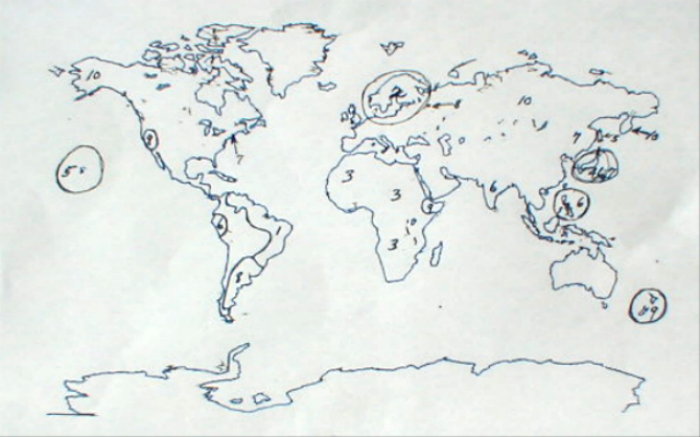
Parasitology Exam
Flukes and Tapeworms
I. Identify (40 points)
1. 1379, contamination vegetation, ruminant bile passageways
2. fox-trappers, alveolar, liver
3. tigers, microcercous, pseudotubercles
4. fleas, double reproductive tract
5. slave trade, furcocercous, Biomphalaria
6. red caltrops, water chestnuts, small intestine
7. Cysticercus cellulosae, Kuchenmeister
8. gravlox, Diaptomus
9. double reproductive tract, mites
10. hematuria, Bulinus
11. monoxenous, monoecious, Brahm Stoker
12. sparganosis, Cyclops
13. salmon, Neorikettsia
14. canines, coenurus
15. Katsurada, anterior mesenteric vein
16. Tribolium, Rattus, unarmed
17. bile ducts, Laurer's canal, liver cancer
18. thick, striated embryophore, unarmed
19. amphistome, leopard frogs
20. bile ducts, snails, ants
II. Draw the reproductive tract of any trematode or cestode of your choice. Label the parts. Be sure to identify the specific worm you have drawn (10 points)
III. Compare the following with drawings. (10 points)
1. swimming and non-swimming cercaria
2. monostome and distome flukes
3. egg capsules of a pseudophyllidean and cyclophyllidean tapeworm
4. endogenous and exogenous hydatid cyst
5. Hymenolepis and Vampirolepis scolices
IV. Describe the epidemiological factors associated with: (15 points)
1. Schistosoma mansoni
2. Echinococcus granulosus
3. Paragonimus westermani
IV. Fill in the chart. (20 points)
ORGANISM INTERMEDIATE HOST DEFINITIVE HOST INFECTIVE STAGE/DEFINITIVE HOST ORGAN INFECTED
cercaria
dog
liver
copepods & fish
Echinostoma revolutum
V. Identify the organism designated by the number (s) on the country or range on the world map seen below. Name the country or a predominate country in that range. (The organisms are limited to the country or range depicted on this map). (10 points)
